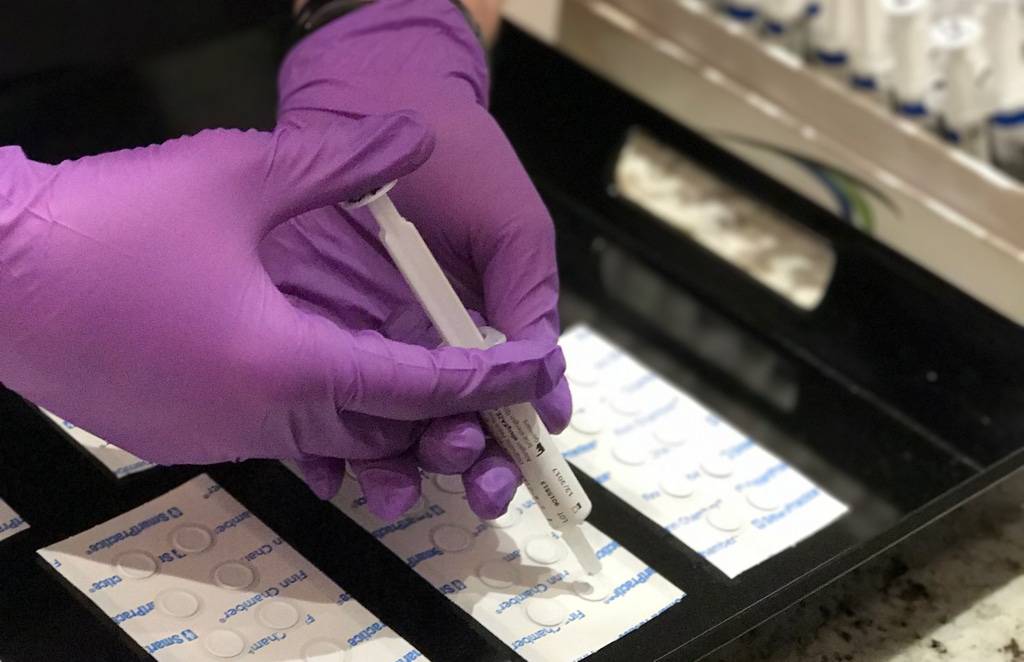The Real Cause of Your Sensitive Skin
People often say, “I have sensitive skin” when they experience patchy redness, bumps, itching, peeling, chapped lips or irritation. The fact is that sensitivity is a symptom and not a diagnosis. This means that there is often a reason for skin reactivity, and in many people, we can identify an underlying condition called Allergic Contact Dermatitis.
Allergic Contact Dermatitis is a type of skin allergy. We usually think of an allergic reaction as something that happens when we eat or inhale something we are allergic to. Allergic Contact Dermatitis is different in that the source of the allergy is often an ingredient in a personal care product or other substance that comes into contact with the skin. Unlike allergies to food or pollen which happen immediately, allergic contact dermatitis can appear up to 2 weeks after exposure.
Personal care products such as shampoo, body wash or moisturizer contain a long list of ingredients that can include fragrances, preservatives, dyes and other chemicals. We can develop an allergy to any of these components over time, even if it is something we have always used without issue in the past. Other potential skin allergy exposures are metals found in jewelry, glues, leathers and clothing dyes. People can even become allergic to the blue in jeans!

It is important to note that allergic contact dermatitis occurs upon repeat exposure. This means we can become allergic to elements contained in the very products we have used and loved for years! Even “natural” products can cause allergic contact dermatitis. In fact, the most well known cause of allergic contact dermatitis is plant called poison ivy!
Most skin allergy symptoms can be treated with topical steroids or anti-inflammatory creams for short-term relief. However, over time, the skin reactions can return and even worsen. Fortunately, we can specifically identify causes of allergic contact dermatitis using patch testing. In patch testing, a series of “allergens” (commonly encountered ingredients or chemicals), are held in place with small chambers and applied to the skin of the back. After 48 hours, the patch chambers are removed and a map is drawn indicating the location of each allergen. One day later, at 72 hours, is the final reading where the dermatologist identifies which allergens caused a reaction. From these results, we can generate an individualized list of “safe” personal care products. Using products known to be safe and avoiding known allergic triggers will result in improved skin texture, fewer rashes and decreased sensitivity. The test is painless and, in most cases, is billable to insurance.
If you have sensitive skin or recurring patchy redness, bumps, itching, peeling, chapped lips or irritation, you may have an undiagnosed skin allergy. Contact Spring Street Dermatology at 646.906.9614 to schedule a consultation and learn if patch testing is right for you!

